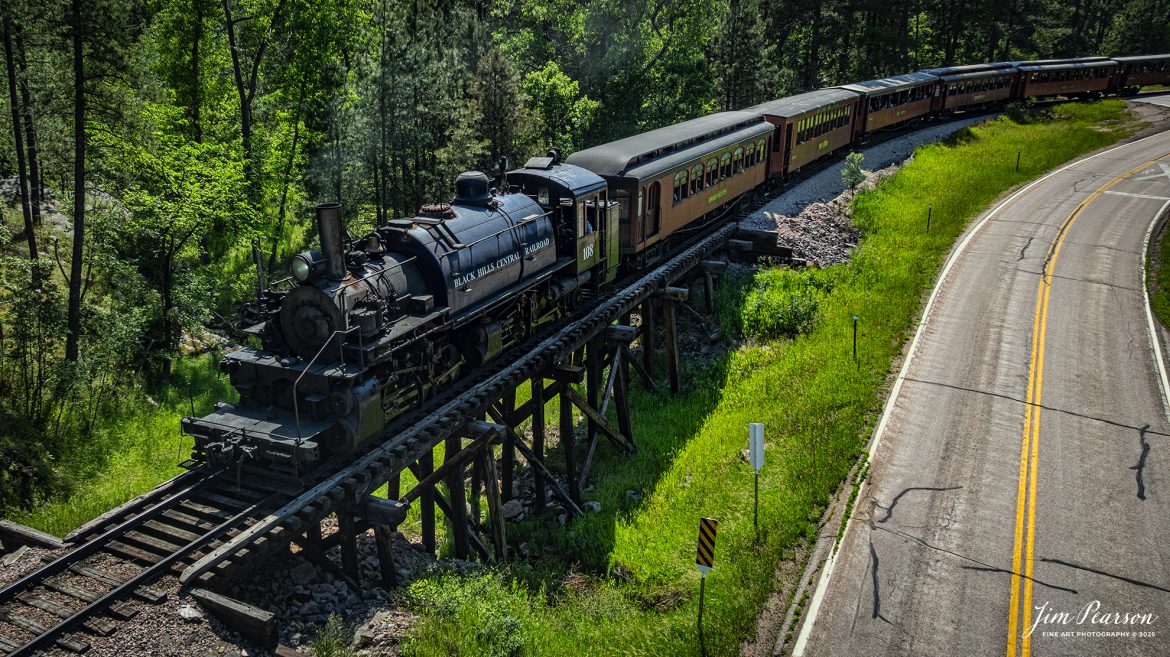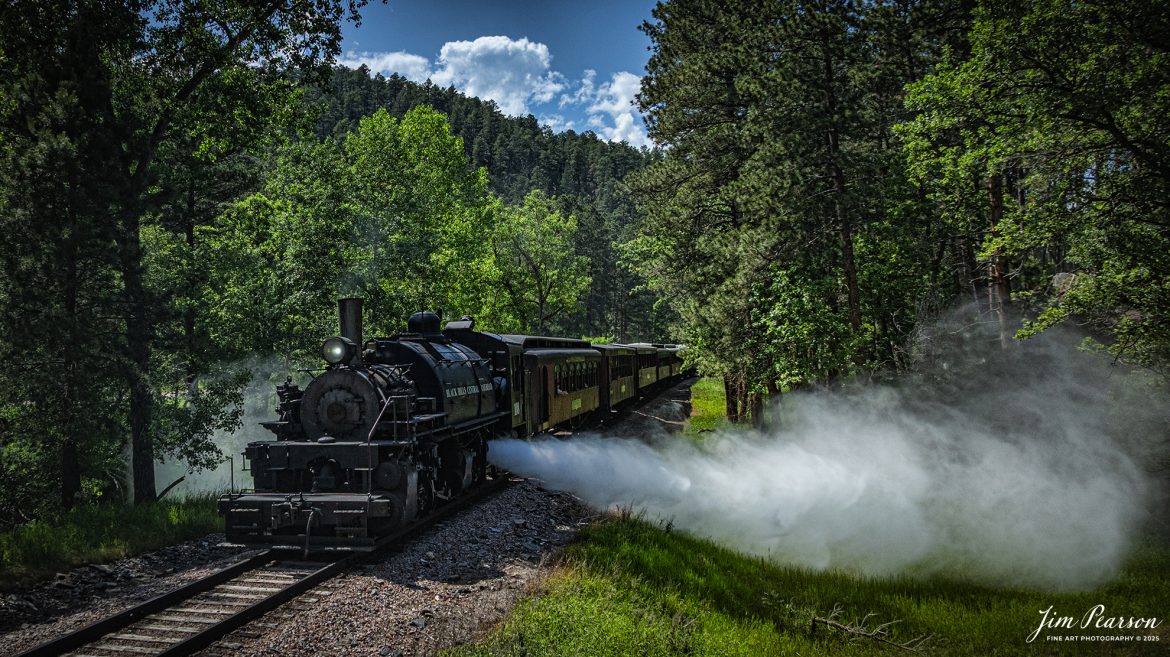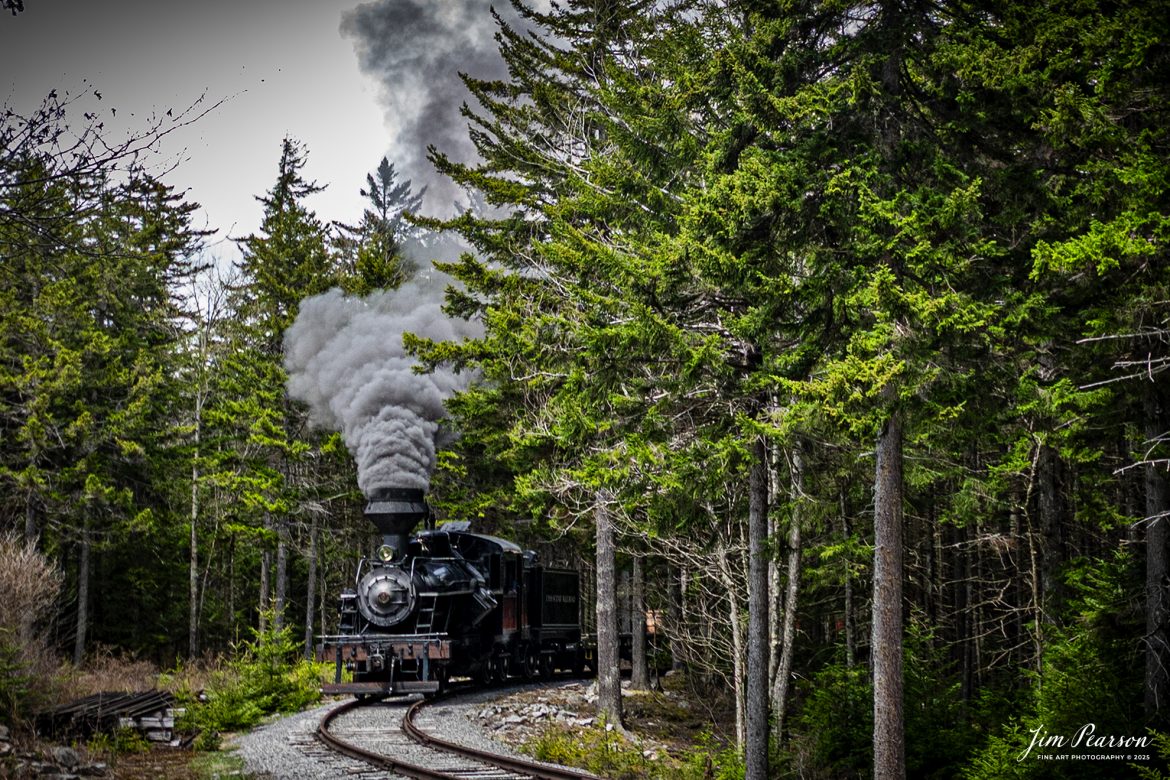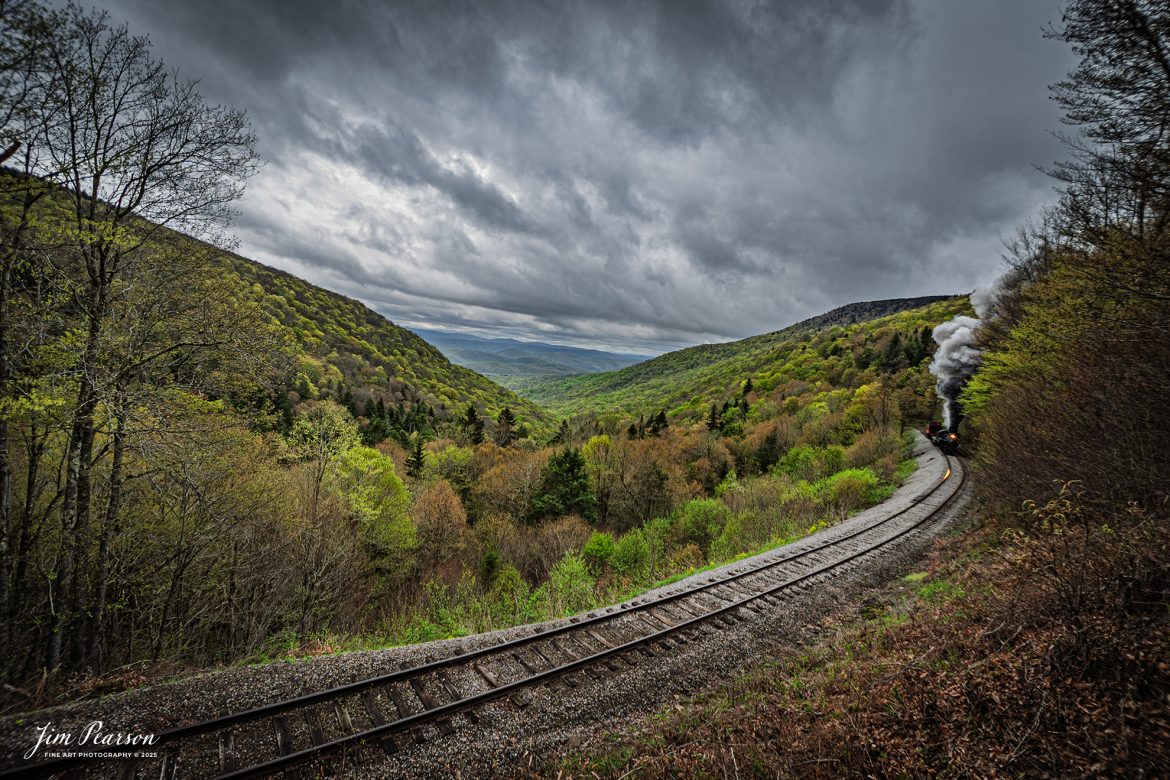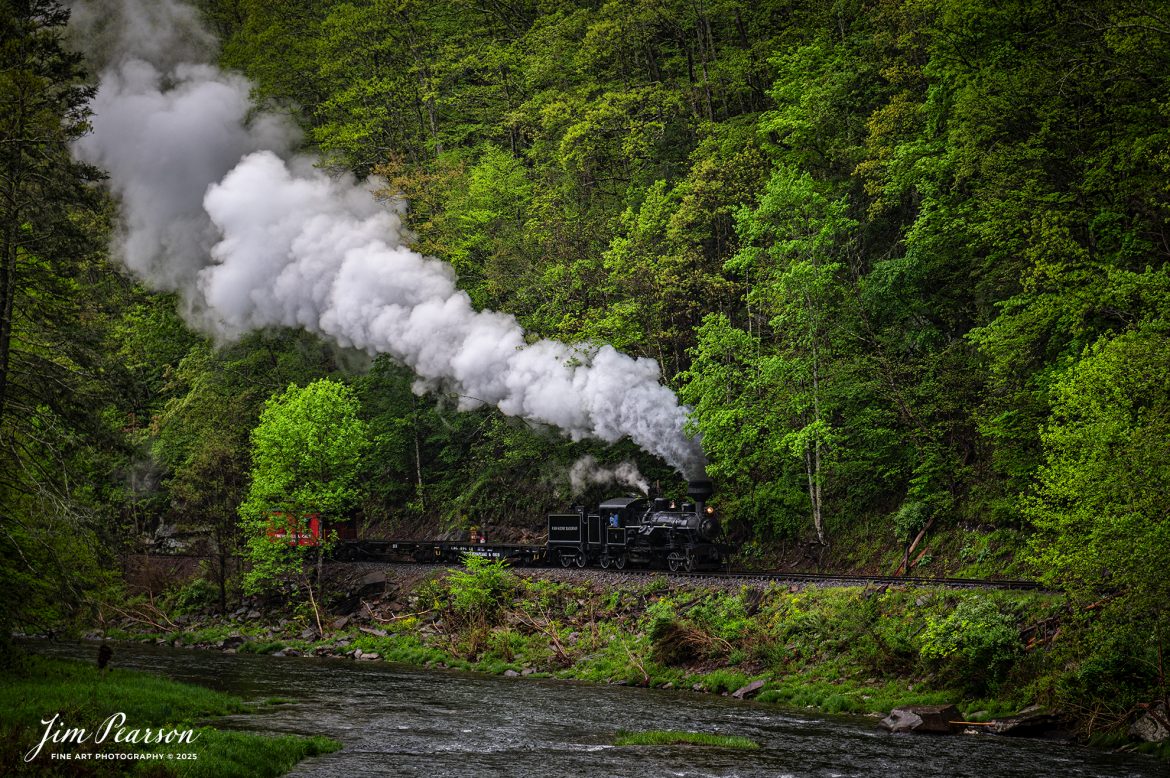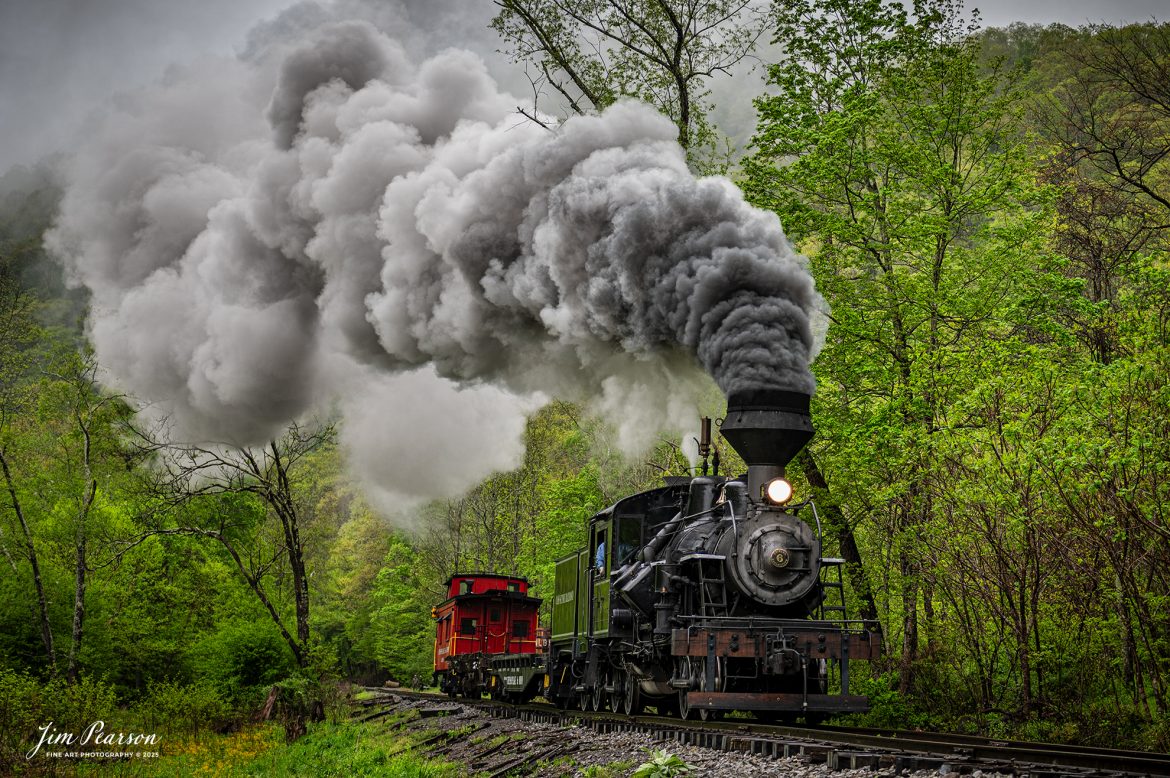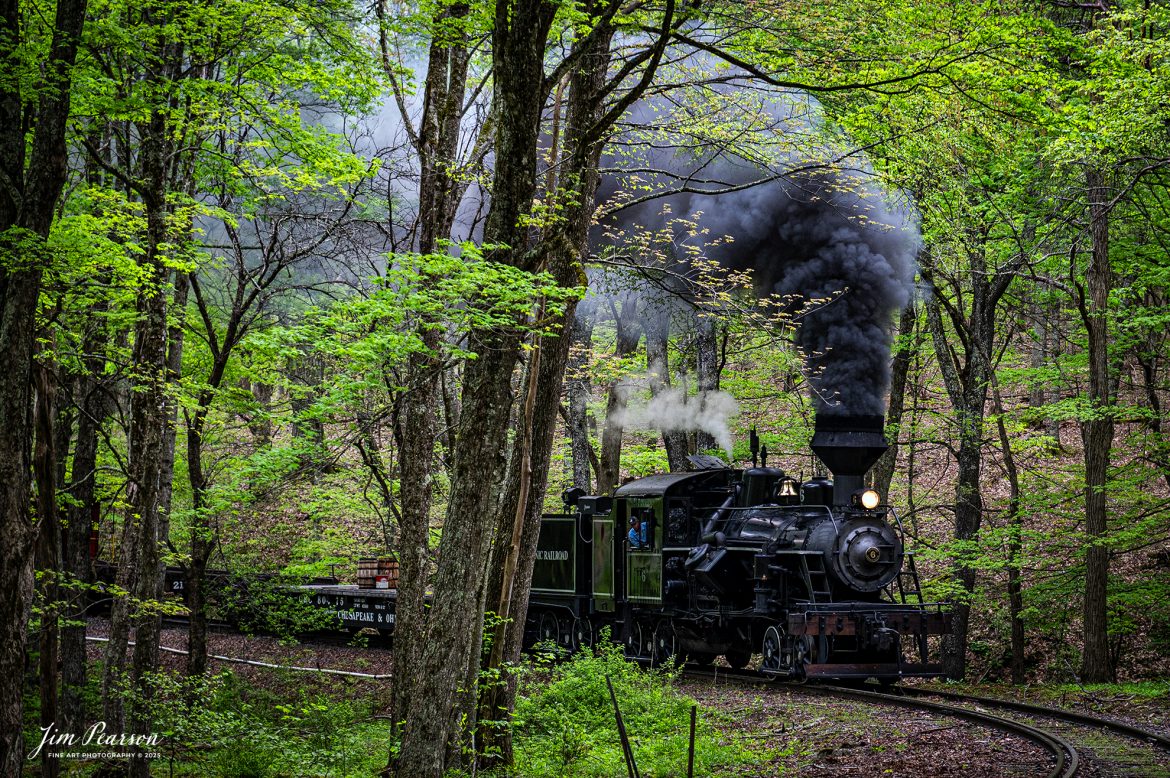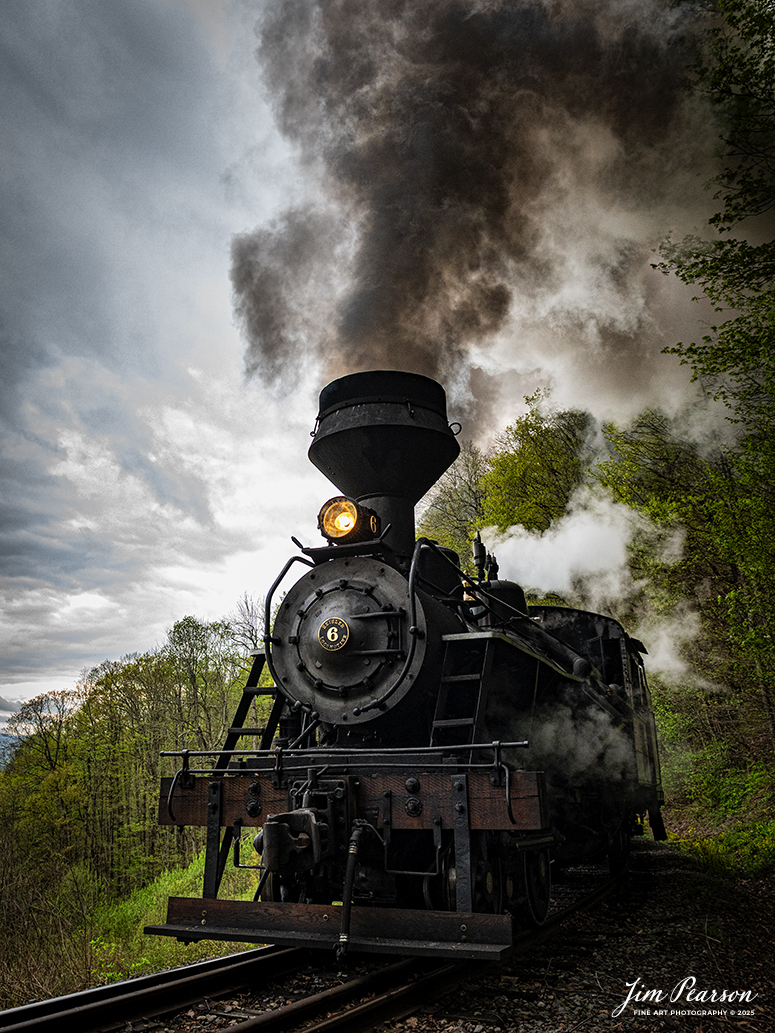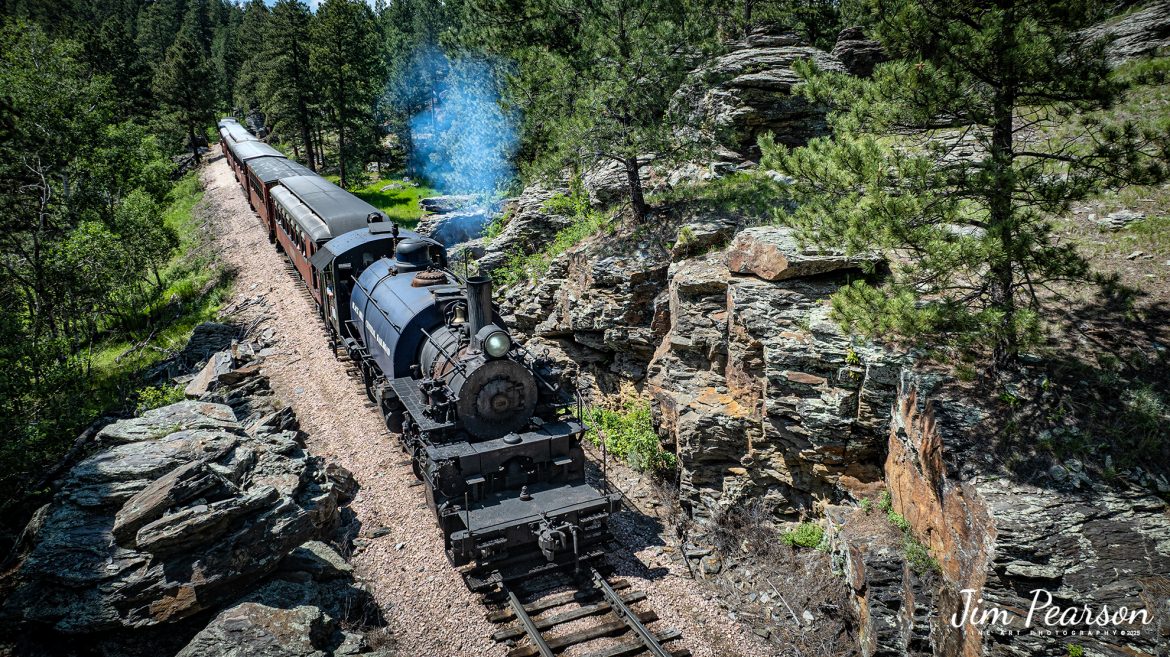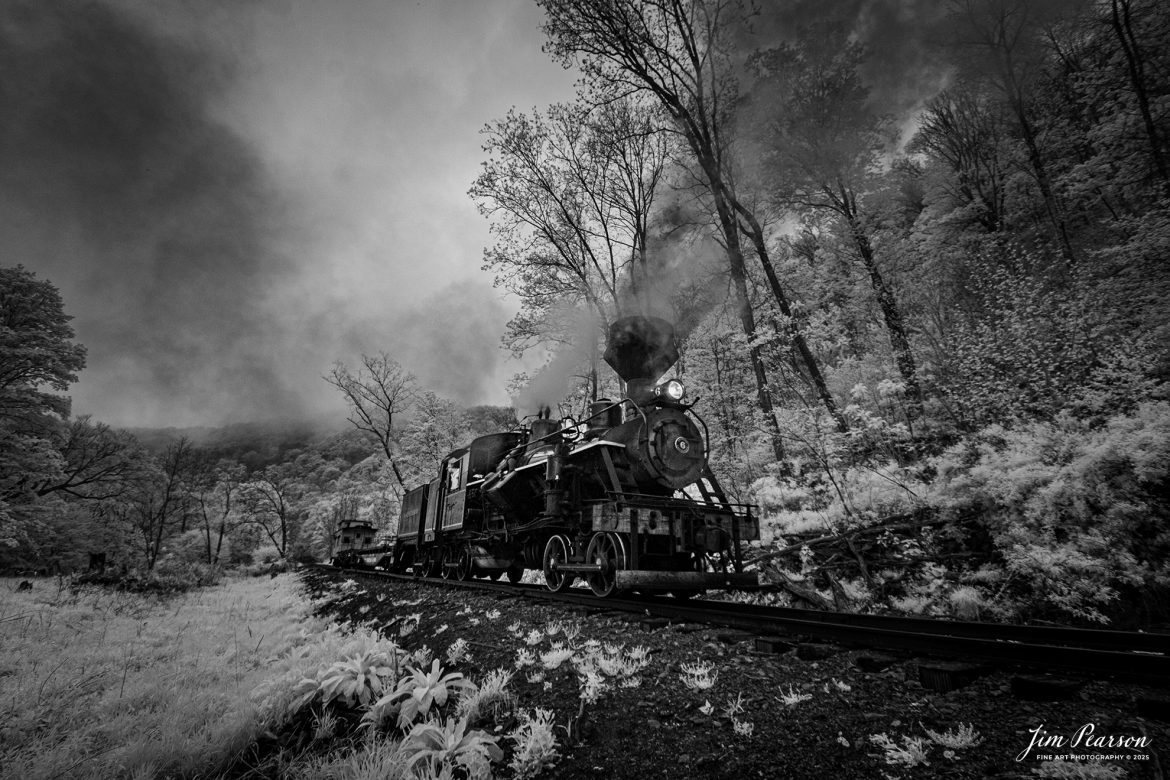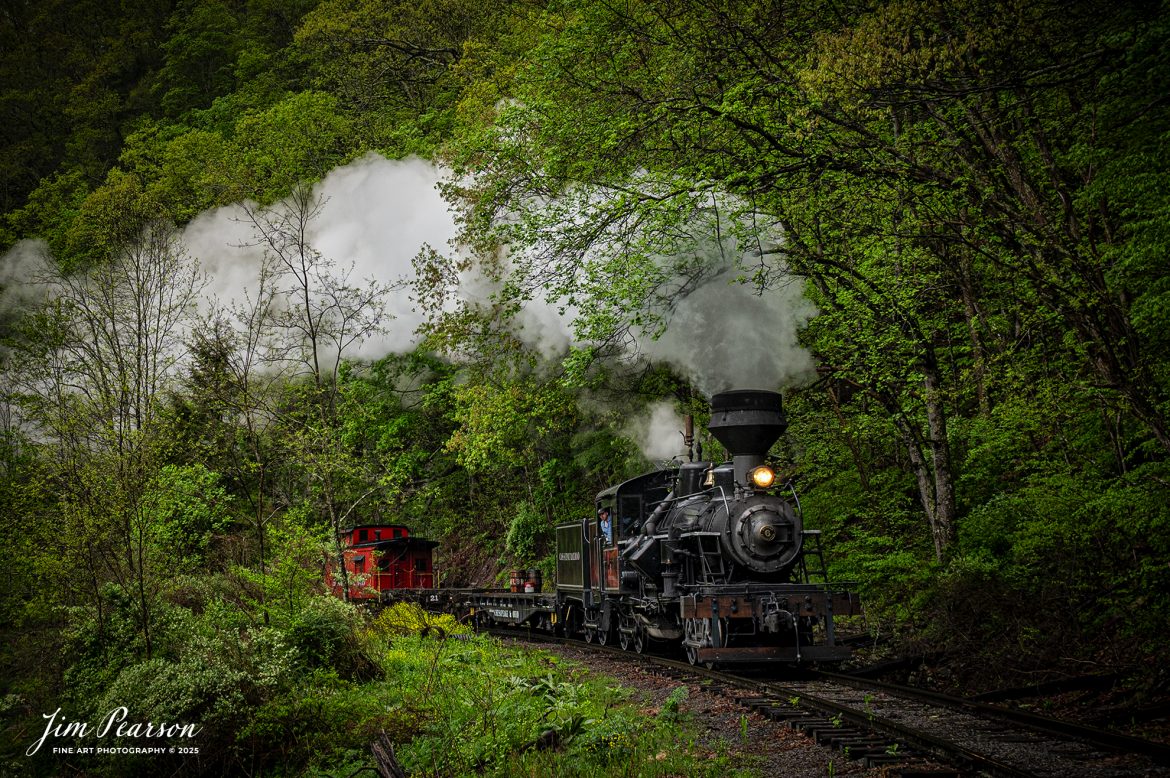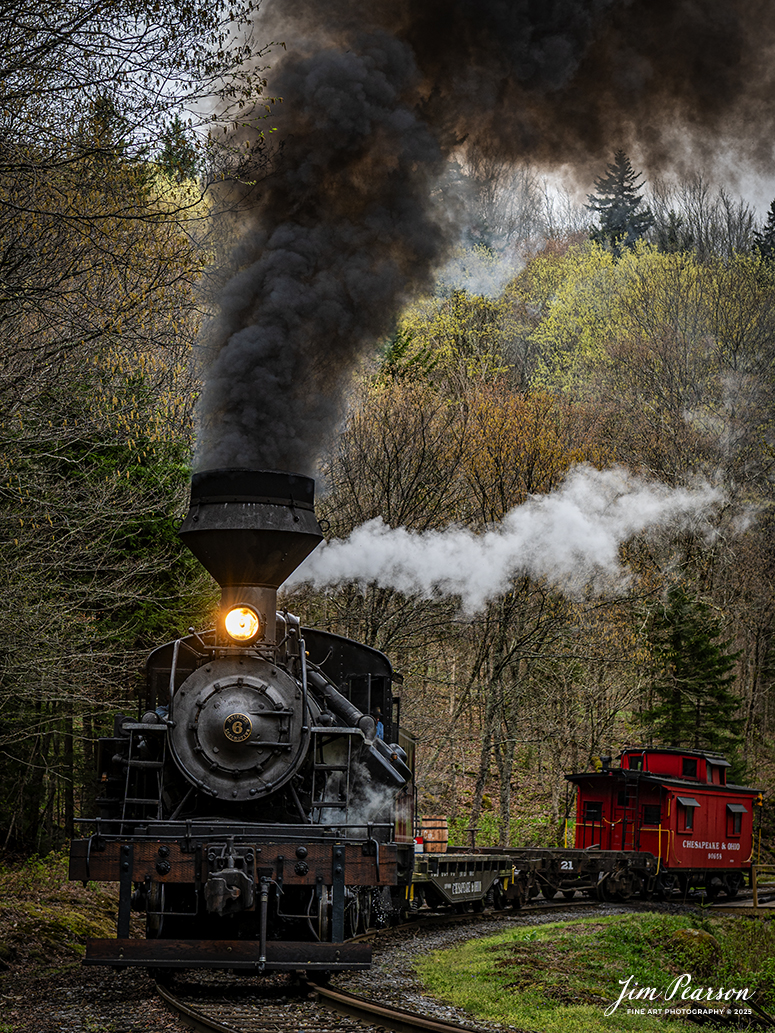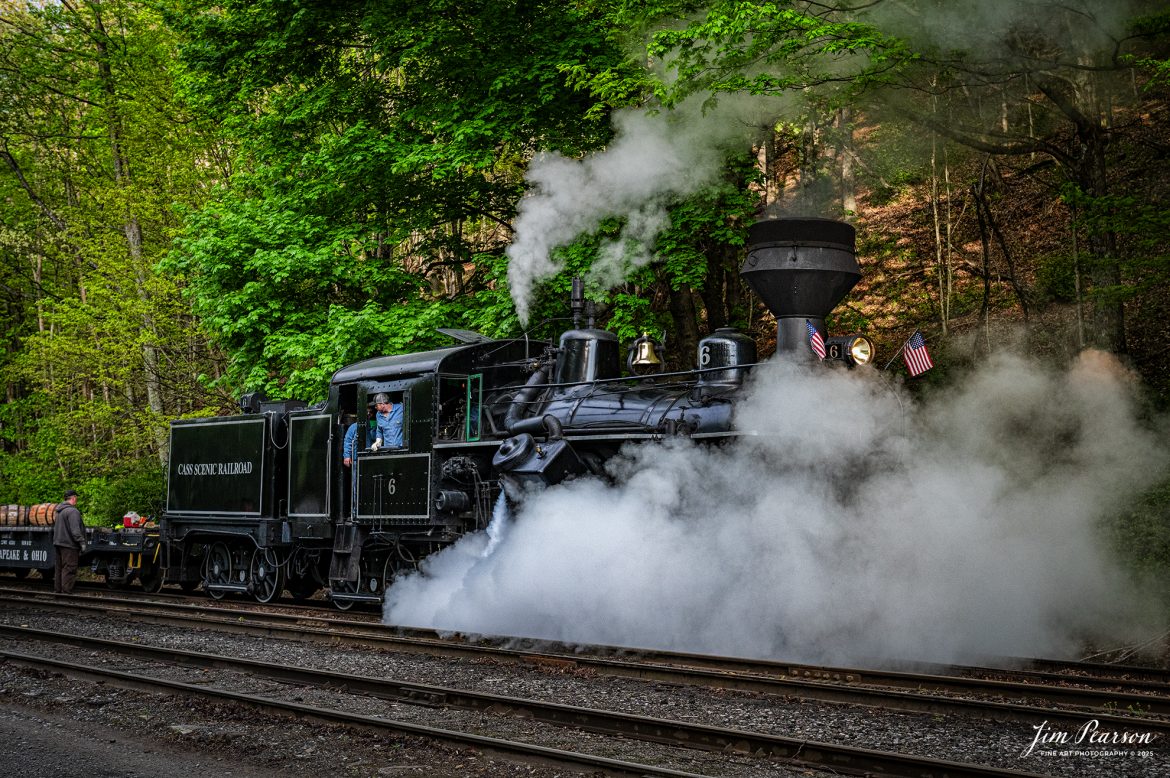Cass Scenic Railroad Heisler #6 pulls through the curve under stormy skies at milepost 6 during the Cass Spring Photographers Special, out of Cass, West Virginia on May 3rd, 2025.
According to the Mountain Rail West Virginia Website: The Meadow River Lumber No. 6 was built by the Heisler Locomotive Works in Erie, PA, in 1929 for the Bostonia Coal & Clay Products Company of New Bethlehem, PA.
The Heisler was sold to the Meadow River Lumber Company at Rainelle, WV in 1939, where it was rostered as No. 6. She retired from the lumber company in 1965 and purchased by the State of West Virginia. The engine ran under its own steam from Rainelle to its new home in Cass in December 1966. No. 6 would begin operating on the railroad in 1968. The Heisler is the fastest geared locomotive in the Cass collection.
Tech Info: Nikon Z6ii, RAW, Nikon 70-300 @ 112mm, f/6.3, 1/640, ISO 360.





